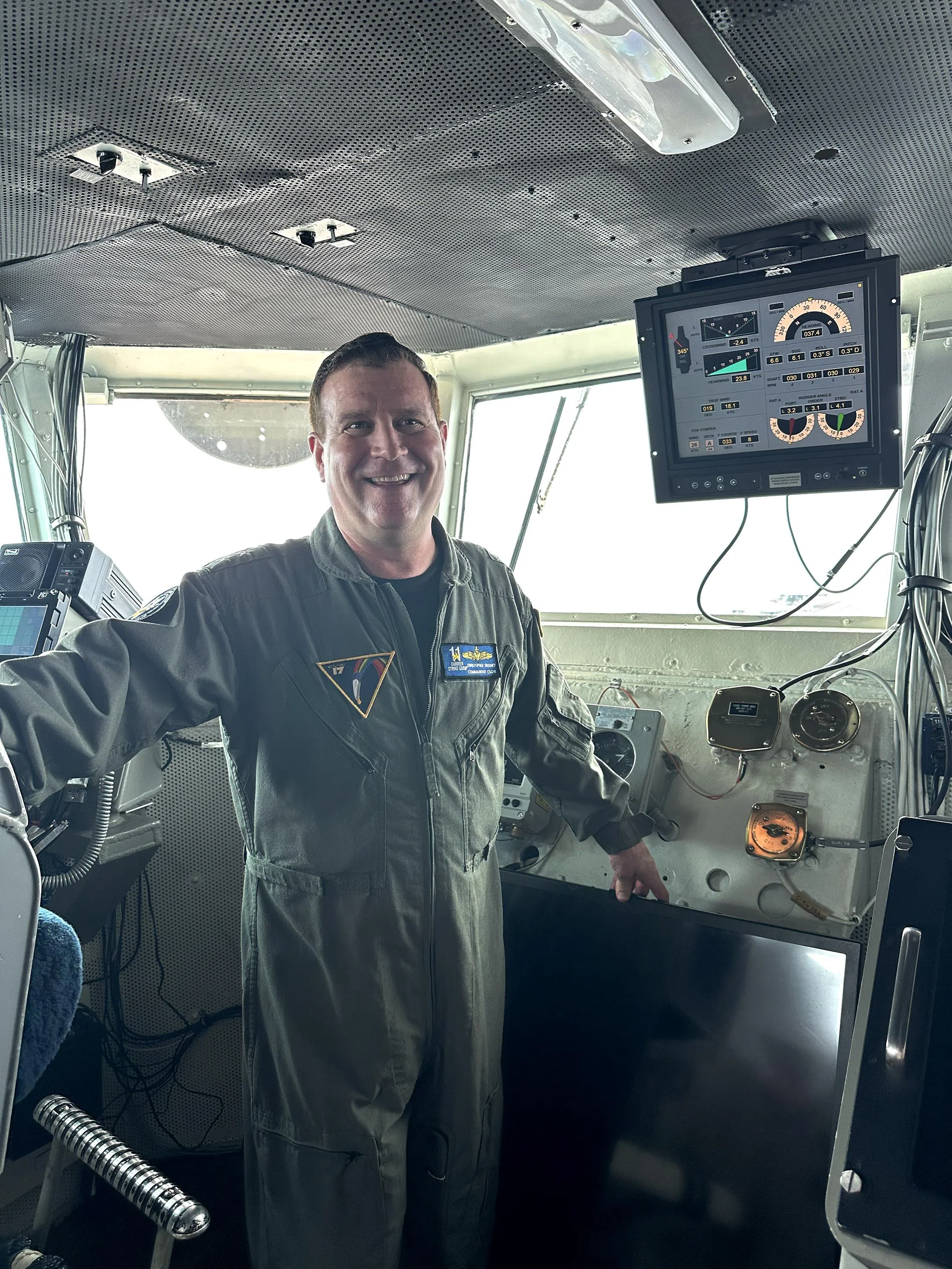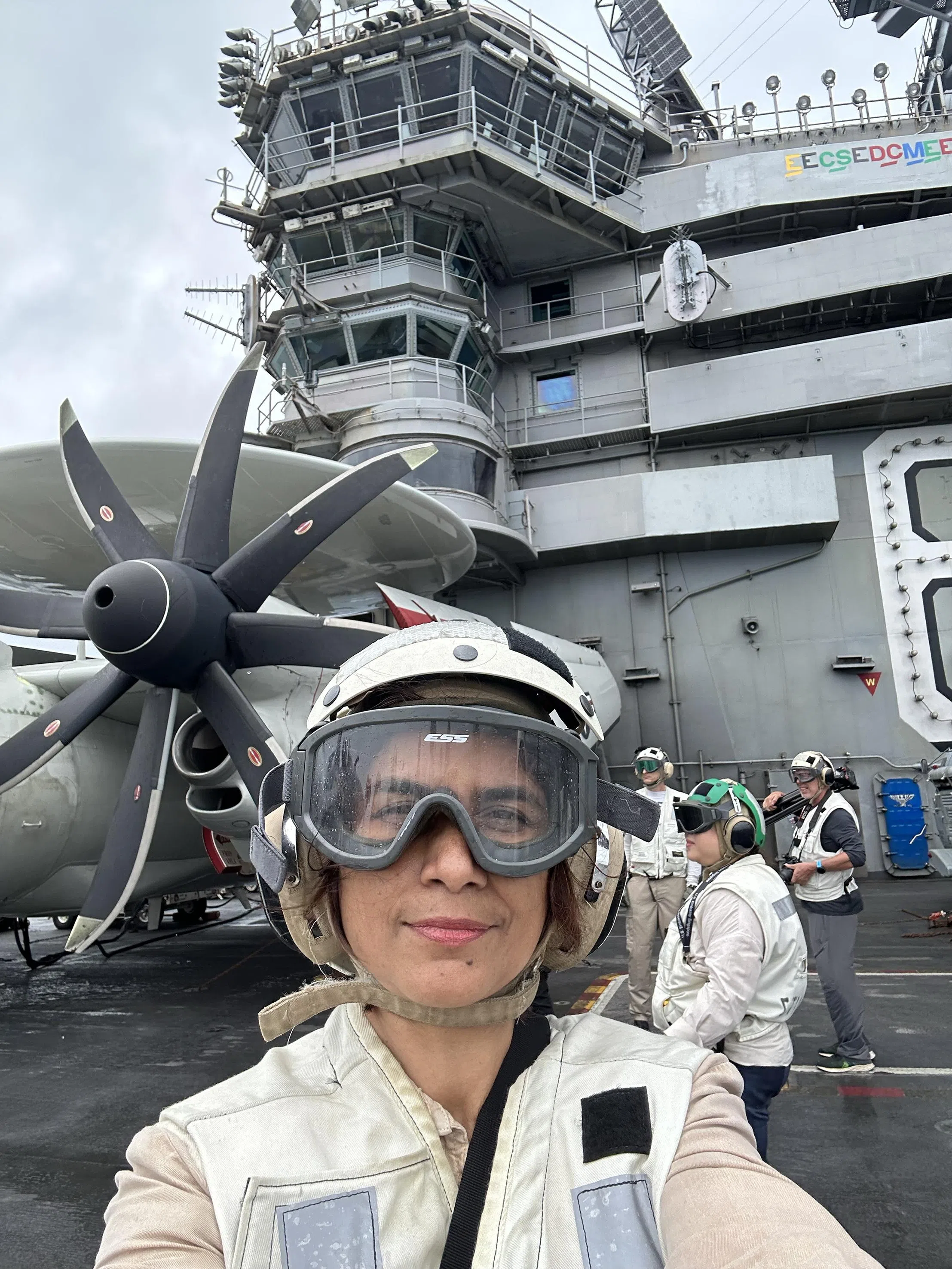Aboard the Nimitz, a high-stakes passage on the high seas
Sign up now: Get insights on Asia's fast-moving developments
Follow topic:
USS NIMITZ, South China Sea –The first crossing of the Pacific by the USS Nimitz in 1987 probably went unnoticed. The world’s oldest serving aircraft carrier was then a strapping teenager; China was just beginning to stir. The Asian giant was a decade deep into its market reforms, immersed in building up its private sector and climbing up the GDP ranks.
Much water has flown under the ship’s bridge since.
Back in the Pacific on another deployment last month, the entry of the grand old lady – 54 now – to the South China Sea made a predictable splash. The Nimitz-led Carrier Strike Group 11, which includes a guided-missile cruiser and several destroyers, was soon shadowed by a Chinese carrier, vintage 2017. China’s Global Times reported that the CNS Shandong held “realistic combat-oriented confrontational exercises”, with drills that simulated hostile aircraft attacks.
“It is normal that the People’s Liberation Army (PLA) monitors potentially provocative foreign military moves on China’s doorstep, and the foreign forces would serve as practice partners that contribute to the PLA’s combat-readiness,” the newspaper quoted analysts as saying.
Standing at the curiously small flag bridge overlooking the wind-blown flight deck of the 23-storey Nimitz, Rear-Admiral Christopher Sweeney, commander of the carrier group, brushed off the incident as nothing more than ordinary.
“We’re always sailing together. It’s international waters, it’s pretty routine. I have not had anything that was provocative or any unsafe interactions,” he told The Sunday Times and a small group of other media outlets in an interview.
“We’re very robust. The Chinese are very robust.”
The region fears that this robustness will one day be tested in its waters. This year, China launches its first domestically designed and built super aircraft carrier.
Rear-Adm Sweeney, in charge of an ageing carrier that may make two more deployments before it is decommissioned, regards China’s success with military modernisation with a dose of detachment.
“It’s taken us 100 years to get there,” he said. “Maybe the Chinese are faster, smarter... I don’t know... But it takes time and experience. You just don’t create it overnight.”
The US, which pioneered the world’s first aeroplane, was experimenting with flying planes off ships as early as in 1910 and pressed its first aircraft carrier into service in 1922. It provided unprecedented war fighting capability and means of power projection.
China, which now owns the world’s largest naval fleet, is said to be wanting at least five carriers by the time it marks the centenary of the PLA Navy in 2027. Counting the Nimitz, there are 11 at American command. Just like the US, China is expected to eventually develop nuclear-powered carriers, which can sail without refuelling for more than 20 years.
Rear-Adm Sweeney may hark back to a storied history and traditions one century old, but technology has a way of compressing time. It is clear that rapidly evolving Chinese technological prowess is a game changer for the US-China rivalry in the South China Sea.
Arrested landing

Rear-Admiral Christopher Sweeney, the commander of the Carrier Strike Group 11, at the flag bridge of the USS Nimitz.
ST PHOTO: BHAGYASHREE GAREKAR
Getting to the Nimitz, via a C-2A Greyhound cargo plane, felt a bit like time travel. The small plane was named Joshua Fung, after one of the naval officers on board the Nimitz, in keeping with American naval tradition. A second plane, part of the original itinerary, was cancelled because of maintenance issues.
The 1990s-era aircraft, with two seats on each side across a narrow aisle, is mainly used to transport cargo, mail and passengers between carriers and shore bases. It offered hard seats facing the back. We sat strapped with life vests and heavy “cranials” – hard helmets, large goggles and clunky earphones. No conversation was possible – the propellers were deafening. There were no windows to afford a view or provide moorings.
The 90-minute ride to an undisclosed spot in the South China Sea, more than 560km from Singapore, ended with an “arrested landing”. There was a sudden, hard jerk as cables engaged the Joshua Fung on touchdown, curtailing its momentum and staving off the sea’s blue-grey embrace. The “arresting” cables are woven from high-tensile steel wire and stretch across the deck. The 22.5-tonne aircraft travelling at up to 240kmh comes to a sudden halt in under two seconds, after covering a mere 55m on the deck.
Like everything else on the aircraft carrier, life is contained within strictly defined spatial parameters. If it is too big, it is cut to size, like the Joshua Fung’s wings, which can fold back. Aircraft handlers, tractor drivers and catapult crew mill around the deck, tending to multiple take-offs and landings in the face of high winds. Some are barely out of high school; the average age of the Nimitz crew is 19. It is the machines, the planes, the ships that are far older.
The new Republican-led House of Representatives, focused on debt and deficit, is pressing for cuts in military spending at a time when recruitment and retention are at record lows. China, meanwhile, is expected to press on with modernisation.
Peace in our times

A view of the South China Sea from one of the two hangar bays of the USS Nimitz.
ST PHOTO: BHAGYASHREE GAREKAR
What has also been getting a slow upgrade is the notion of peace itself. The US is coming to grips with the idea that the end is approaching for the post-World War II era where it acted as the guarantor of security underwriting the region’s prosperity, including China’s.
China is aggressively asserting its rights in the region –
There is always the danger of escalation when superpowers vie for domination. Rear-Adm Sweeney euphemistically refers to “unsafe, unprofessional encounters” which can put crew or equipment in harm’s way. He sets store by process. “Our operating procedures are in accordance with the rules. We’re always going to default back to the rules. When you do that, you’re safe. And, you come from a higher moral standing,” he said.
There are other ways to engage on the high seas than through military manoeuvres.

ST Foreign Editor Bhagyashree Garekar on the flight deck of the USS Nimitz on Jan 27.
ST PHOTO: BHAGYASHREE GAREKAR
There is the old-fashioned, profitable path of trade, which has gone on for centuries in the South China Sea. It remains the centrepiece of the region’s economy and its diplomacy today. At the Nimitz souvenir store, I picked up a coffee mug emblazoned with the ship’s motto, “Teamwork, a tradition”. Reflexively, I turned it over to check the bottom.
That’s right, it was made in China.


